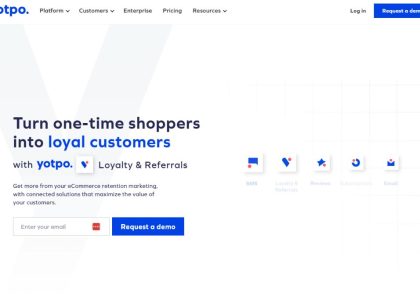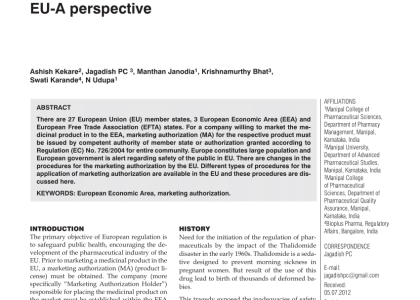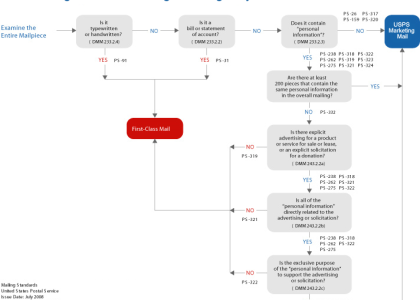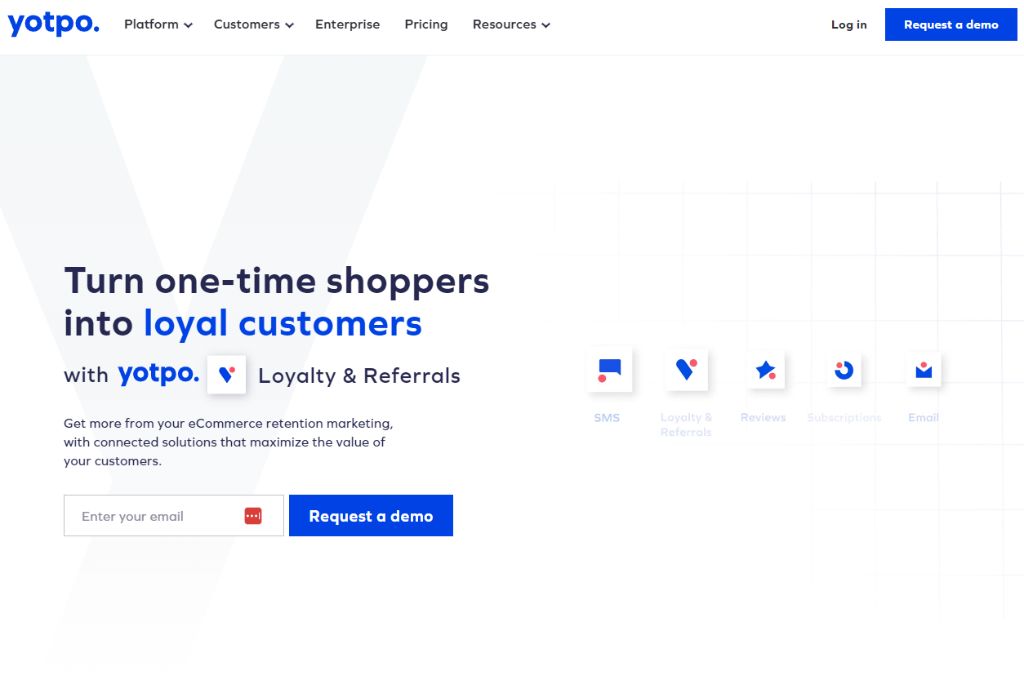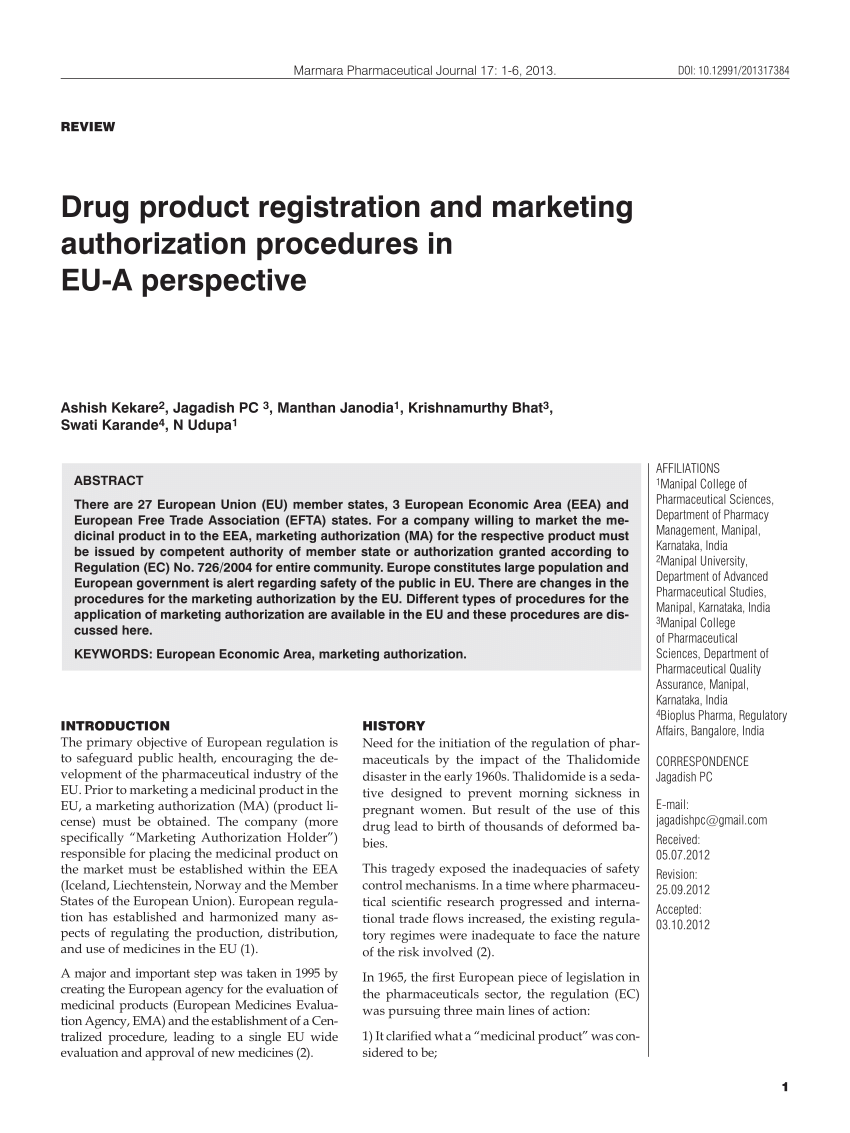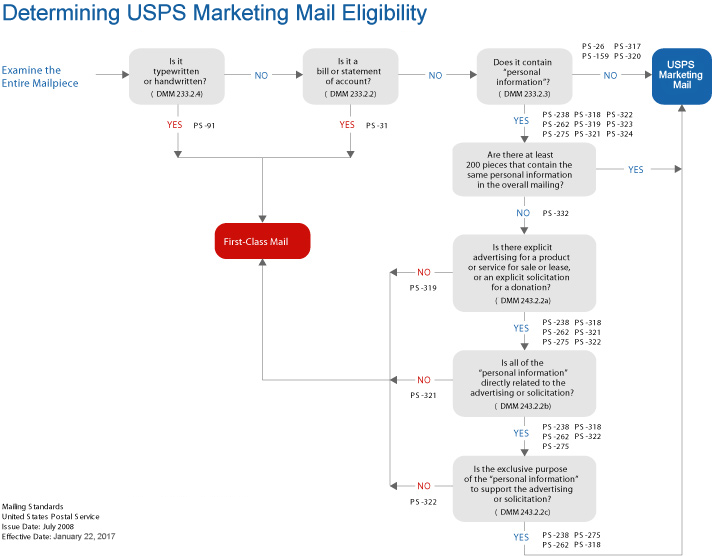Mastering the art of marketing is no simple task, particularly when it comes to understanding and applying the more nuanced strategies such as micro marketing.
In the wider spectrum of marketing methodologies and practices, micro marketing commands a unique position. This approach, rather than focusing on a broad customer base, pinpoints a specific segment or niche of potential consumers. It seeks to engage these consumers through highly tailored promotional activities and content, established by intensive research and data analysis. This form of marketing allows businesses to customize their offering and communication based on a targeted audience’s needs, behavior, and feedback.
This guide is designed to help marketers discern the ins and outs of micro marketing – its key principles, how to use it effectively, and its advantages over other marketing strategies. Additionally, we will be illustrating the concept with practical examples from businesses that have successfully employed this marketing strategy.
By understanding the concept of micro marketing in depth, marketers can tap into the vast potential that niche targeting holds, and devise strategies that not only meet but exceed consumer expectations. Gaining a competitive edge in the saturated marketplace of today necessitates such focused, personalized marketing efforts, and this guide aims to equip you with the knowledge to do so.
Grasping the Notion: Micro Marketing Explained
Micro-marketing, in its simplest terms, can be described as a technique where organizations direct their marketing efforts towards a narrow, well-defined group, typically within their customer base. The underlying idea is to create highly relevant and personalized promotions, products, and services for this specific group. It is useful because it allows businesses to connect on a deeper level with their targeted customer segments, hence potentially increasing customer loyalty and revenue.
This focused approach can help businesses stand out in the increasingly crowded market, particularly when competitors fail to address certain customer needs or preferences explicitly. However, micro marketing is not just about promoting products or services to a small group, but rather about understanding their distinct wants and delivering solutions that cater to them perfectly.
Features of Micro Marketing
- Well-targeted: Businesses practicing micro marketing have a very specific target audience, which may be based on customer demographics, psychographics, behaviour, location, etc.
- Niche focus: The initiatives are focused towards a niche market where the business can offer specialized products, promotions, or services that cater to the unique needs of the segment.
- Personalized communication: Interaction with the target audience is usually personalized, aiming to build lasting relationships and enhance customer retention.
To truly reap the benefits of this approach, businesses need to carry out in-depth market research to understand their target group’s psyche. Only then can they tailor their offerings in the most appealing way possible for their niche customers.
Contrasting Micro and Macro Marketing Approaches
Micro marketing and macro marketing, though both strategies used in business, fundamentally differ in their orientation and approach.
On the one hand, micro marketing is a strategy designed to target a small, clearly defined group of customers. The entire marketing strategy is usually customized according to the specific needs, preferences, and expectations of this small customer grouping. The focus is on establishing close relationships with customers to gain a deep understanding of their preferences. By doing so, businesses can tailor their products, services, and marketing messages directly to these individual customers. A classic example of this strategy would be how certain high-end brands offer personalized services to their exclusive clientele.
On the other hand, macro marketing is a much broader strategy, aiming to reach as many potential customers as possible. It applies a sweeping, large-scale approach, focusing on comprehensive market trends instead of individual customer needs. It typically involves mass marketing campaigns, aimed to appeal to a wide consumer base. A prime example would be how large retail chains may use mass media advertising to reach a broad demographic.
- Key point of difference: While micro marketing delves deep into specific customer needs, macro marketing addresses the broader market needs and trends.
Each of these strategies has its own benefits and limitations. It’s important for businesses to understand these differences and strategize accordingly. In some cases, a combination of both approaches may offer the best results. The nature of the product or service, the business model, and the target market all determine which approach would be most effective.
Underpinning Characteristics of Focused Marketing
Micro marketing, oftentimes referred to as focused marketing, carries distinctive trademarks that set it apart from other ad strategies. These key traits help in designing campaigns that are focused on a narrow customer segment, thereby maximizing the return on marketing investment.
Detailed Customer Profile
One of the most characteristic attributes of micro marketing is the realization of a comprehensive customer profile. These campaigns are not meant for the masses, instead, they are precisely targeted towards a niche audience. Attributes like age, location, buying habits, income brackets and even hobbies play vital roles in these profiles.
Personalized Approach
Micro marketing campaigns are recognized for their individualized approach. Instead of a one-size-fits-all strategy, this approach generates tailored messages to resonate with the targeted group’s demands. This amplifies the likelihood of viewers connecting with the marketing efforts on a personal level.
Intense Market Research
Rigorous market exploration underpins any successful micro marketing campaign. It’s through fierce market research that relevant customer segments are recognized. Marketers can then get into the nitty-gritty of market trends and competitors, consequently creating an unbeaten strategy.
Affordable
Micro marketing can be a cost-effective alternative for firms with pre-determined financial resources. Rather than splurging money on saturating the market with unfocused advertisements, firms can simply channel their funds towards avenues that likely foster extra sales.
High Conversion Rates
Thanks to the highly targeted nature and individualized approach, micro marketing is very likely to drive higher conversion rates. By communicating with customers on a more personal level, the likelihood of eliciting interest and ultimately influencing purchase decisions is much higher.
The Relevance of Detailed Marketing in the Modern Commerce Environment
In the contemporary world of business, the role of meticulous marketing is becoming increasingly critical. This approach emphasizes the formulation of customized marketing strategies that target a specific group of consumers rather than seeking to appeal to the broader market. This mode of selling your product is essential due to several reasons.
Understanding Your Target Audience
Detailed approach in marketing promotes a better insight into your target customer base. By focusing on smaller consumer groups, businesses can better understand their customers’ preferences, demands, and consumption patterns. This information is crucial in designing products or services that will efficiently meet customer needs and even exceed their expectations.
Establishing Stronger Customer Relationships
Another reason why this form of marketing is vital in today’s business world lies in its power to foster stronger customer relationships. Implementing this marketing strategy plays a key role in fostering loyalty and trust, as customers feel valued and understood when businesses pay attention to their specific needs and preferences.
Enhanced Efficiency in Marketing Budget Allocation
The detailed approach in marketing also supports more efficient use of the marketing budget. A marketing strategy focused on a specific group is often more cost-effective than broad-based marketing strategies, as it allows for a more efficient allocation of resources by targeting customers who are more likely to be attracted by the product or service in question.
Driving Profitability
Meticulous marketing promotes profitability in businesses. Offering specialized products or services to a targeted customer base often leads to higher sales volumes and improved profit margins, as the products or services are better tailored to meet specific consumer needs.
In conclusion, in the current business environment, a strategy focused on marketing in detail should not be underestimated. It holds the potential to enhance customer relationships, make efficient use of marketing resources, and increase the profitability of businesses.
Crafting a Detailed Approach to a Niche Market Strategy
The process of creating a precise approach marketed towards a smaller, targeted audience or a niche market involves several key steps.
Identifying The Subset
Begin by pinpointing the subset of the larger consumer base. Who are the specific consumers you’re attempting to reach? This could be a segment based on geographic location, demographic attributes, or a particular set of interests or behaviors. Knowing your target audience intimately allows your marketing efforts to be more impactful and efficient.
Researching The Market
It is crucial to gather exhaustive information about your precision-targeted consumer group. This involves understanding their buying behavior, preferences, needs and lifestyle choices. Market research will provide you with data and insights that are integral to shaping your niche marketing efforts.
Designing Tailored Marketing Campaigns
The next step involves creating bespoke marketing campaigns that speak directly to your identified subset of consumers. Each aspect of the campaign – from the messaging and the channels used, to the timing of the campaign – should be thoughtfully calibrated to the unique needs and preferences of your micro segment.
Measurement and Adjustment
The final step in this process is measuring the effectiveness of your marketing activities. This involves tracking key metrics, including engagement rates, return on investment (ROI), and customer acquisition cost, among others. Based on these measurements, tweaks can be made to optimize the marketing strategy and ensure it yields the desired results.
Micro-marketing can be a powerful way to reach a granular subset of consumers who are likely to be highly responsive to your campaigns. However, it requires careful research, meticulous campaign design, and ongoing measurment and adjustment to be effective.
Finding the Right Target: Exploring Micro Segments in the Market
Ensuring the success of marketing efforts lies significantly in properly pinpointing your target audience. Here is where exploring smaller, specialized market segments, often referred to as ‘micro, market opportunities,’ comes into play.
Identifying these micro-target markets focuses in on a small, distinctive portion of the broader market, defined by specific needs and preferences. Uncovering these smaller segments allows businesses to personalize and adapt their marketing strategies to cater specifically to these identified consumers, leading to more effective and efficient campaigns.
Steps Towards Finding Micro Niches
- Research the Market: A comprehensive appreciation of your present market is essential. Utilize customer data, demographic shifts, buying trends, and consider potential micro-niche opportunities within this information.
- Identify Consumer Needs: Understanding specific problems, needs, or wants of a particular group of consumers can reveal potential micro-segments. Conducting surveys, interviews, and detailed consumer research can provide these insights.
- Analyze Competition: Recognizing gaps where competitors are not delivering can also unveil potential micro-niches. Vigilantly observing competitors’ action to understand their strengths and weaknesses can offer valuable insights.
Mastering identification of these niche markets helps businesses to tailor their marketing tactics, making efforts more goal-oriented and outcomes more fruitful. As a result, businesses can gain a competitive edge by providing superior value to these targeted customers and potentially identifying untapped market areas, that larger companies might overlook.
Deciphering the Contrast between Micro Marketing and Market Segmentation
Understanding the nuances between micro marketing and market segmentation can provide businesses with a robust strategy to cater to their customers more efficiently. Both approaches aim to target a specific group of consumers, but the scope and focus differ significantly.
Micro marketing, often referred to as a narrow or niche marketing approach, focuses on a small, well-defined group of consumers. This group typically has unique and specific requirements that the business then endeavours to meet. This strategy is less about the size of the group and more about its distinctiveness. The high level of specificity enables businesses to attain a high degree of relevance in their marketing efforts. Examples include a local bakery promoting specials to residents living in its vicinity or a high-fashion boutique targeting affluent fashion-conscious women in a specific age bracket.
On the other hand, market segmentation is a more broad-spectrum approach, dividing a vast market into discernable segments based on various parameters like age, gender, preferences, or geographical locations. Businesses can then tailor their marketing strategies to meet the needs of these different segments. For instance, a cosmetics company could segment its market into categories like ‘teen skincare,’ ‘anti-aging solutions,’ etc., each developed with targeted products and promotional strategies.
- Differences in Scale: Micro marketing focuses on a more minute, often localised group of consumers looking for specific products or services. In contrast, segmentation targets larger segments of an extensive market.
- Differences in Focus: Market segmentation groups consumers with similar characteristics, while micro marketing delves deeper, concentrating on the individual needs of consumers.
- Differences in Cost-effectiveness: As a highly targeted approach, micro marketing can be more cost-effective in terms of return on investment (ROI). However, segmentation may have a broader impact as it targets larger consumer groups.
Understanding these subtleties can enable businesses to devise marketing strategies that hit the mark, fostering customer satisfaction and ensuring a competitive edge in the market.
The Advantages of Employing a Focused Market Approach
Adopting a detailed market strategy, often known as ‘micro marketing’, presents various benefits, particularly for businesses targeting a small, niche consumer base. This method involves creating strategies tailored to a specific demographic or geographic market segment. Implementing this might be tremendously advantageous for many organizations.
Better Customer Engagement
Due to the personalized nature of segment-focused marketing, it results in enhanced client interaction. The ability to tailor products, services, and promotions to align with the customers’ unique needs and wants allows businesses to establish a deeper, more meaningful connection with their clientele. This can result in increased brand loyalty and customer retention rates.
Efficient Use of Resources
Micro-marketing allows for efficient and optimal usage of marketing resources, resulting in cost-effective campaigning. Since strategies are narrowly targeted, they prevent waste of resources on broad and generally irrelevant audience groups. This strategic approach guarantees that every penny spent is utilized in a targeted manner to generate maximum impact.
Increased Competitive Edge
Businesses that tailor their offerings to a particular set of customers often have an upper hand over competitors with a more generic or superficial approach. By paying attention to the unique demands of a targeted market and offering specialized solutions, businesses can separate themselves from competitors in the market and earn a unique position within their targeted communities.
Improved Product Development
With a targeted marketing strategy, firms can have a better understanding of what their consumers need or want, resulting in improved product development and refinement processes. Companies can design their products and services to match their customers’ specific preferences, enhancing the chances of success in their marketing efforts.
Tackling Obstacles in Precision Marketing
In the pursuit to understand the complexities of precision marketing, several challenges may be encountered. This type of marketing stands out as a cost-efficient way to maximum target audience impact, albeit not without its share of difficulties.
Predominant Challenges in Precision Marketing
Acquiring Detailed Data: Gathering sufficient and relevant data is the primary obstacle in precision marketing. This refined marketing approach calls for detailed information about customers’ behaviors, preferences, and demographics. However, obtaining such specifics is frequently a costly and time-consuming task.
Maintaining Privacy and Trust: Although amassing detailed data is essential for effective micro-level marketing, it raises serious issues regarding customer privacy. Customers are becoming increasingly concerned about sharing personal data, leading to hesitations in disclosing information. Thus, maintaining a balance between data collection and privacy assurance poses a significant challenge.
Fragmented Market Segments: The prime focus of precision marketing is the identification and advancement towards micro-level customer segments. However, an overly fragmented market can push businesses into a state of overspecialization, which may result in the alienation of potential broader audience groups.
Forecasting Market Changes: Precision marketing is not a static process. A successful marketer needs to anticipate market trends and change strategies accordingly. However, predicting these shifts can be difficult, particularly in an excessively segmented market.
- Continuous Strategy Evaluation: Exceptional precision marketing strategies are characterized by continuous evolution. Marketers should frequently reevaluate their approach to identify what works and what doesn’t. This entails continuous monitoring and evaluation which can be a time-consuming endeavor.
- High Initial Costs: Implementing a precision marketing strategy involves significant initial investment. The high costs for detailed data gathering and analysis, as well as the development of personalized marketing materials, can serve as a notable challenge.
To navigate these roadblocks, businesses need to employ effective data management practices, ensure customer privacy, avoid overspecialization, anticipate market shifts, and be ready for continuous strategic evaluation and initial investments.
Leading Victorious Micro Marketing Initiatives
From manufacturing to the consumer market, micro-marketing has indeed made its mark, with numerous campaigns attaining significant success in recent years. By targeting niche audiences with personalised messages, organisations have demonstrated the raw power and potential of this bespoke marketing approach.
Red Bull’s Content Marketing
Energy drink maker Red Bull implemented a potent campaign that targeted adrenaline junkies and extreme sports enthusiasts. They created custom content showcasing their participation in extreme sporting events which appealed greatly to their audience segment. This approach cemented their brand image, leading to increased brand loyalty and product consumption among focused groups.
Dove’s Real Beauty Campaign
The toiletries brand Dove grabbed eyeballs for its ‘Real Beauty’ campaign where they firmly endorsed body positivity for women. This marketing approach successfully resonated with its target demographic. By appealing to their audience’s emotions and self-esteem, Dove managed to spark significant conversations around their initiative.
Key Takeaways
- ‘Red Bull’ successfully utilised micro marketing strategies to directly appeal to a specific group of the audience with personalised content catering to their tastes.
- The ‘Real Beauty’ campaign by ‘Dove’ captivated its target demographic by strategically addressing the sensitive topic of body positivity.
In conclusion, the success of these campaigns demonstrates the importance of understanding the nuances of one’s target audience. Micro-marketing strategies offer a more direct, simplified and cost-effective approach to forge meaningful connections with specific audience members, boosting overall brand exposure and loyalty.
Examining Practical Instances of Focused Micromarketing Strategies
Moving away from the theoretical aspects of micro marketing, let’s dive into some illustrative examples of businesses successfully leveraging this unique approach.
Online Personal Care Products Retailer
Our first instance is an online personal care products retailer that specializes in natural and organic goods. Instead of trying to appeal to the mass market, this business opted for a granular marketing method. They concentrated their efforts on a defined niche of consumers of eco-conscious clientele, who prefer organic products over commercially manufactured goods. The company often collaborates with influencers who share the same values to promote their products. Their marketing endeavors are designed intently to drive purchase decisions of this specific consumer segment.
Local Artisan Bakery
A local artisan bakery exemplifies another excellent illustration of micro marketing in practice. This small business thrives on its appeal to a defined geography and caters to consumers who value freshly baked, artisanal products. The bakery uses a marketing strategy that projects a homely, local vibe and often involves community events like Saturday farmers markets.
Gourmet Coffee Subscription Service
Examining the gourmet coffee subscription service case, they have masterfully utilized the strength of micro-level marketing. Understanding that not every coffee lover has the same palate, they have segmented their market based on taste preference and roast type. They offer a personalized service based on these unique preferences to engage their specific audience groups better. To further enhance their customer experience, they also provide curated articles about different coffee beans and brewing tips.
With these real-world examples, it’s clear that micro marketing methodologies have their unique benefits. Businesses can focus their resources on a more precise target group and therefore create personalized experiences that resonate strongly with the customers. Moreover, it often results in higher customer loyalty and better return on marketing investments.
The Outlook for Personalized Marketing Techniques
As we gaze into the crystal ball of marketing trends, it’s evident that personalized marketing strategies are gaining momentum. This approach, often referred to as micro-marketing, enables brands to communicate with their customers on a more personal and engaging level. By focusing on small, well-defined groups of customers with specific needs, brands can optimize their marketing efforts to resonate more strongly with their audience.
With the advancement in technology and data analytics, we can expect the methodology of personalized marketing to become even more precise and effective. Big data and artificial intelligence are at the forefront of this change, promising sophisticated customer segmentation based on preferences, purchasing history, and even predictive behavior patterns. In turn, this allows for highly individualized marketing strategies.
Translating Trends into Strategies
Forward-thinking companies are increasingly leveraging these emerging trends to future-proof their business. For instance, geolocation data can be used to offer targeted promotions to customers in a specific geographic range. Similarly, using AI-driven chatbots for customer interactions can not only save resources but also provide insightful data for precise customer profiling.
- Niche social media platforms are expected to rise in popularity as businesses look to interact with their target audience on a more personal level.
- In the realm of e-commerce, personalized website experiences such as product recommendations based on past browsing history, can lead to higher conversion rates.
Looking forward, it’s clear that the movement towards personalized marketing will continue to shape the landscape of brand-customer interactions. Brands that can accurately forecast the future trends and adapt accordingly will stay ahead of the curve, fostering loyalty among their customers and ultimately enhancing their overall marketing success.
FAQ: What is micromarketing examples
What is micromarketing and how does it differ from traditional marketing strategies?
Micromarketing is a marketing strategy that involves targeting a specific market segment or niche group with tailored marketing efforts. It differs from traditional marketing strategies in its focus on a very small and defined audience, as opposed to a broader approach.
Can you provide an example of a successful micromarketing campaign?
An example of a successful micromarketing campaign is a local coffee shop creating a digital marketing campaign that targets coffee enthusiasts within a specific neighborhood, offering discounts and promotions tailored to their preferences.
What are the key advantages and disadvantages of micromarketing?
The key advantages of micromarketing include highly targeted and effective marketing, deeper customer relationships, and potentially higher conversion rates. Disadvantages include limited market reach, higher costs per customer, and the risk of over-specialization.
How can businesses effectively use micromarketing in their digital marketing plan?
Businesses can effectively use micromarketing in their digital marketing plan by identifying a niche group, understanding their specific needs and preferences, and creating customized content and promotions that resonate with this group.
In what ways can micromarketing be more effective than a macromarketing strategy?
Micromarketing can be more effective than a macromarketing strategy when the goal is to build strong connections with a very specific audience, as it allows for more personalized and relevant marketing messages.
What are some examples of successful micromarketing tactics?
Examples of successful micromarketing tactics include location-based advertising, personalized email campaigns, social media content tailored to specific interests, and offering exclusive deals to a particular community or demographic.
How does micromarketing fit into the broader marketing mix?
Micromarketing fits into the broader marketing mix as a targeted marketing approach that complements other strategies. It allows businesses to focus on specific market segments, providing a more personalized experience to those customers.
Can micromarketing be utilized in inbound marketing strategies?
Yes, micromarketing can be utilized in inbound marketing strategies by creating content and experiences specifically designed for a niche audience, thereby attracting and engaging potential customers in a more focused manner.
What is required to create a successful micromarketing campaign?
To create a successful micromarketing campaign, a business needs to thoroughly understand its target audience, tailor its messaging and offerings to meet the unique needs of that audience, and choose the right channels to reach them effectively.
How does micromarketing help in tailoring marketing efforts to a specific market segment?
Micromarketing helps in tailoring marketing efforts to a specific market segment by providing insights into the preferences and behaviors of that segment, allowing businesses to create highly relevant and personalized marketing strategies.
Can you provide an example of micromarketing in action?
An example of micromarketing is a local bookstore tailoring its promotions and book selections to meet the specific interests and preferences of the neighborhood’s readers, rather than using a one-size-fits-all approach.
What are the different types of micromarketing strategies?
Different types of micromarketing strategies include geographic micromarketing, demographic-based targeting, behavioral micromarketing, and psychographic segmentation. Each type focuses on specific characteristics or behaviors of a target market.
In what ways is micromarketing different from traditional marketing?
Micromarketing isn’t like traditional marketing as it focuses on a small, well-defined segment with highly tailored marketing strategies, while traditional marketing often targets a broader audience with a more generalized approach.
What are the key advantages of a successful micromarketing strategy?
The key advantages of a successful micromarketing strategy include higher engagement rates due to personalized messaging, better customer loyalty, and potentially higher ROI due to targeted and efficient use of marketing resources.
What does a business need to consider to implement a successful micromarketing strategy?
To implement a successful micromarketing strategy, a business needs to conduct in-depth market research, understand the specific needs and preferences of the target segment, and create highly personalized marketing content.
How does micromarketing allow companies to enhance their marketing campaigns?
Micromarketing allows companies to enhance their marketing campaigns by targeting specific groups with tailored messages, making the campaigns more relevant and effective compared to broad-spectrum marketing.
What is the definition of micromarketing, and how is it used?
Micromarketing is a type of marketing strategy that focuses on a small group of highly targeted customers. It is used to create personalized marketing messages and campaigns that resonate with a specific audience, leading to more successful marketing outcomes.
What are the pros and cons of using micromarketing?
The pros of using micromarketing include higher engagement, personalized customer experiences, and potentially better conversion rates. The cons include limited market reach and the potential for higher costs per targeted individual.
How can businesses effectively use location-based micromarketing?
Businesses can effectively use location-based micromarketing by targeting customers in a specific geographic area with personalized offers and messages, which can be especially effective for local businesses or events.
What goals does micromarketing aim to achieve?
Micromarketing aims to achieve goals such as building deeper customer relationships, increasing customer loyalty, improving conversion rates, and effectively utilizing marketing budgets by focusing on highly targeted segments.







